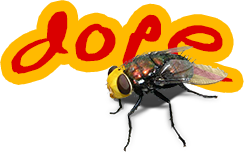Fusebox 5.5 XML Cheat Sheet
The XML changes in Fusebox 5.0 mostly brought a standard and more solid feel to the Fusebox XML language. Fusebox 5.5 brought the ability to not use the XML grammar, so there are very few changes between 5.0 and 5.5. Changes between Fusebox 5.0 and 5.1 grammar and 5.1 and 5.5 grammar are outline at the end of this document.
Fusebox.xml
circuits
Defines folders of fuses and their relationships with each other.
<circuits>
<circuit alias="any_name" path="my_circuit" parent(optional)/>
...
</circuits>
classes
Defines objects that are used in the application. Does not create any instances of them. Considered not the hot thing to use since ColdSpring and other similar bean factories.
<classes>
<class alias="Employee" classpath="com.company.Employee" type="component" [constructor="init"]>
...
</classes>
parameters
name/value pairs for important fusebox parameters
<parameters>
<parameter name="fuseactionVariable" value="fuseaction" />
<parameter name="defaultFuseaction" value="main.welcome" />
<parameter name="precedenceFormOrUrl" value="form"/>
<parameter name="mode" value="development-circuit-load|development-full-load|production"/>
<parameter name="password" value="secure"/>
...
</parameters>
globalfuseactions
Defines any fuses that are executed at the beginning and ending of every request to the fusebox app.
<globalfuseactions>
<appinit>
<fuseaction action="main.appinit" />
<fuseaction action="blog.start" />
</appinit>
<preprocess />
<postprocess />
</globalfuseactions>
plugins
Includes files at specified places in the processing of a request. Put plugin cfm files in the plugins folder.
<plugins>
<phase name="preProcess">
<plugin name="pluginName" template="file" />
</phase>
<phase name="preFuseaction" />
<phase name="postFuseaction" />
<phase name="fuseactionException" />
<phase name="postProcess" />
<phase name="processError" />
</plugins>
Circuit.xml
circuit
Defines a circuit for organizing fuseactions
<circuit access="public|private|internal" xmlns:lexicon="path/to/lexicons/">
<prefuseaction />
<fuseaction name="myFA" />
...
<postfuseaction />
</circuit>
fuseaction
Defines a fuseaction for direct calling via URL or do action.
<fuseaction name="myFA" access="public|internal|private" permissions="custom value">
<do>, <set>,
<include> etc ...
</fuseaction>
do
Executes a fuse like a new request. Beware of recursion when dealing with pre/post fuseactions.
<do
action="circuit.fuseaction|localFuseaction" [contentvariable="content"] [append="true|false" for contentvariable] [overwrite="true|false" for contentvariable]>
[<parameter name="paramName" value="#paramVal#" /> parameters exist only for the life of this action]
</do>
In order to make the do action a dynamic value, you have to invoke a dynamic do:
<invoke object="myFusebox" methodcall="do('circuit.fuseaction'[, contentvariable][, append][, returnOutput])" />
if
Conditional processing. Somewhat limited in the way that there is no 'else
if'. Include one or both true/false blocks in any order.
<if condition="myVar GT 4">
<true>
<do action="something"/>
</true>
<false/> <!-- not required -->
</if>
include
Includes a file, aka a Fuse. File should be from the current folder (circuit). Does not require the file extension, but is recommended.
<include template="myfile" [required="true|false" throw error if not found] [contentvariable="content"] [append="true|false" for
contentvariable] [overwrite="true|false" for
contentvariable]>
[<parameter name="paramName" value="#paramVal#" /> parameters exist only for the life of this action]
</include>
The syntax for including a file through an implicit circuit is <include circuit="circuitName" template="fileName[.cfm]" />
instantiate
Creates an instance of an object referenced in fusebox.xml's classes section. This is frequently not used in favor of ColdSpring or other abstract bean factories.
<instantiate object="application.blog" class="blog (defined in fusebox.xml classes)">
<argument value="#val#" /> (numbered arguments for init method)
<argument name="" value="" /> (named arguments for init method)
</instantiate arguments="#params#">
invoke
Invokes a method from an object that has been instantiated. Does not implicitly rely on the <instantiate> tag. Sometimes this is not used in favor of <set value="#component.method()#" />.
<invoke [object|class|webservice]="reference" method="myMethod" [returnvariable="myObject"]>
<argument value="#val#" /> (numbered arguments)
<argument name="arg" value="#val#" /> (named arguments)
</invoke>
loop
Creates a simple loop.
<loop condition="i lt 3">
<loop query="myQuery">
<loop list="apples,tomatoes,lemons,cheese" index="i">
<loop from="1" to="100" index="i">
<loop collection="#myStruct#">
relocate
Forwards the user to another request.
<relocate [url|xfa="location"] [addtoken="true|false"] [type="client|server|javascript|moved"]>
set
Sets a variable.
<set name="variables.name" value="value" [overwrite="true|false"] />
xfa
Defines exit points, can be used in href= or form action=, etc., or in the <relocate> tag. XFAs should either be in the format of "circuit.fuse" or "fuse" if pointing to the current circuit.
<xfa name="myXfa" value="circuit.fuse" [overwrite="true|false"] >
prefuseaction
Defines the section for events that fire before any fuses from the circuit are called. Beware of possible recursion issues, for example, if a prefuseaction specifies a <do> verb with an action in the same circuit, the prefuseaction will fire again before it calls the action, which will call the do verb again, recursing forever.
postfuseaction
Defines the section for events that fire after any fuses from this circuit are called. Again, beware of possible recursion issues.
Fusebox 5 XML General Development Notes
Lexicons (custom tags)
Define with <circuit
xmlns:myLex="myLex/" xmlns:cf="cf/">
Use with <myLex:myTag attribute1="abc" /> only within the circuit where the lexicon has been declared.
This above example looks for the file approot/lexicons/myLex/myTag.cfm
XFAs
Defines an exit point for controlling a page's outbound links. It is typical to define XFAs in a prefuseaction.
XML:
<xfa name="home" value="main.welcome" />
<xfa name="save" value="userFormSave" /> (2nd one is missing "circuit.", so fuseaction will be in the same circuit)
In the display file:
<form action="#myself##xfa.save#">
<a href="#myself##xfa.home#>home</a>
variables.myFusebox
Contains: thisCircuit, thisFuseaction, originalCircuit, originalFuseaction
fusebox.init.cfm
Should consist of (at minimum):
self = "index.cfm";
myself = "#self#?#application.fusebox.fuseactionVariable#=";
A display file could then have
<a href="#myself#circuit.fuse">
or
<a href="#myself##xfa.link#">
Access Modifiers
Circuit and fuseaction tags have access modifiers:
Public = Can be called from a browser
internal = Can only be called from fusebox (via <do>)
private = Can only be called from the current circuit
File Name Prefixes
File name prefixes should largely be out of the scope of best practices once the application employs CFCs. Nearly all .cfm files are for display while other actions and queries should exist in respective, organized CFCs. That said:
dsp - a display file - something that renders to the browser
frm - a form - a type of display file
qry - a single query
act - an action file
Differences between Fusebox 5.1 and 5.5
Dynamic do
Differences between Fusebox 5.0 and 5.1
Plugins can have custom attributes
relocate has type=javascript for browser-based relocating
relocate has type=moved for a 301 redirect
relocate has xfa= to follow a preestablished exit point
A 5 page PDF version of the Fusebox XML cheat sheet is available.
